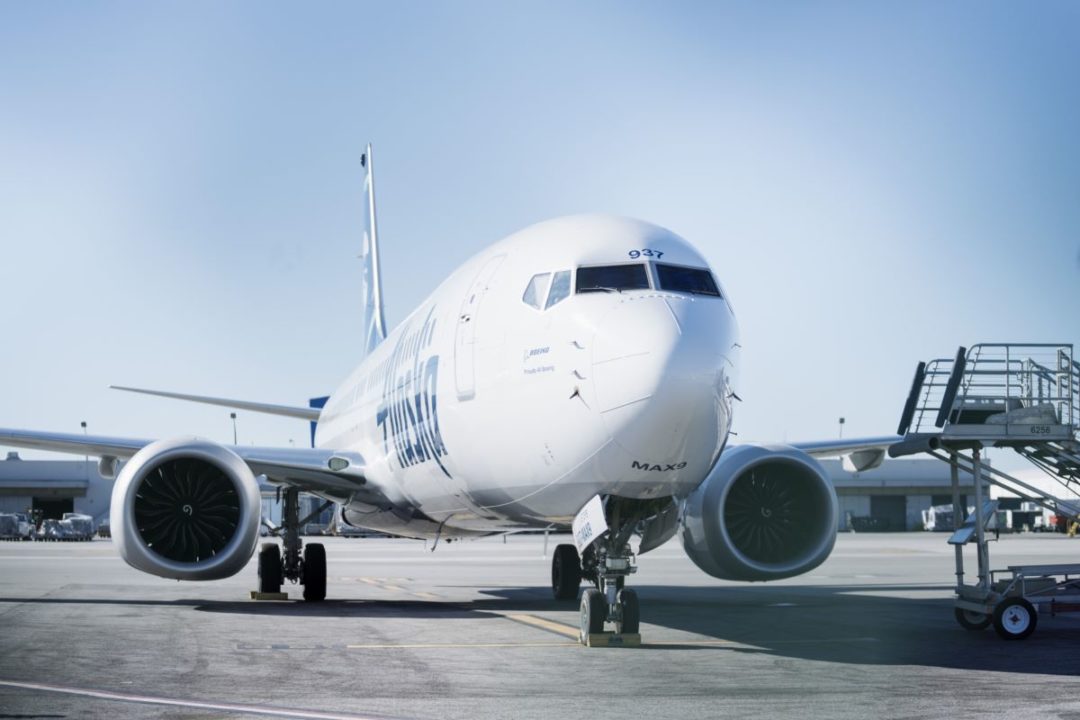
Visit Our Sponsors |
|
|
|
|
|
|
|
|
|
|
|
|
|
|
|
|
|
|
|
|
|
|
|
|
|
|
|
|
|
|
|
|
|
|
|
|
|
|
|
|
|
|
|
|
|
|
|
|
|
|
|
|
|
|
|
|
|
|
|
|

Photo: Bloomberg
Alaska Air Group Inc. expects second-quarter profits will top analyst estimates, signaling that the carrier is recovering from a near-catastrophe on one of its planes that triggered the temporary grounding of a key Boeing Co. aircraft model.
Adjusted earnings will be $2.20 to $2.40 a share in the current period, backed by a surge in travel by tech companies and increased demand for premium tickets, the carrier said in a statement Thursday. That’s ahead of the $2.12 average of analyst estimates compiled by Bloomberg.
“Overall, the carrier’s results and guide looked very good,” Citi analyst Stephen Trent said in a note. Revenue trends “appear to be driving strength into the second quarter and the full year.”
Alaska shares gained 5% at 1:00 p.m. on April 18 in New York after earlier rising as much as 7.1%, the most in more than two years. Other airline stocks also increased, pushing a Standard & Poor’s 500 index of nine carriers up 3%.
The upbeat outlook suggests the carrier is bouncing back after regulators temporarily grounded Boeing’s 737 Max 9 after a fuselage panel blew off one of the planes during an Alaska flight on Jan. 5. Boeing has reimbursed Alaska $162 million for lost first-quarter profits tied to the mishap. The airline has said it expects additional compensation, without disclosing an amount.
Alaska expects to receive between 10 and 20 Boeing 737 Max aircraft this year, down from an earlier plan for 23, the carrier said. Handovers of new Boeing jets have slowed this year as the company works to bolster quality controls and regulators scrutinize its factories in the wake of the January panel blowout.
The business travel rebound that began in the first quarter is expected to carry through the rest of the year, Chief Financial Officer Shane Tackett said in an interview. Passenger volume from technology companies has returned to about 85% of 2019 levels, while total business travel has fully recovered.
The figures are “a significant step up from last year,” Tackett said. Alaska expects to increase second-quarter capacity 5% to 7%.
Federal aviation regulators grounded all Max 9 aircraft after the January accident until inspections could be completed. Most planes resumed flying in late January or early February. Alaska earlier confirmed that some travelers opted to fly on other airlines for a period after the incident.
National Transportation Safety Board investigators have said the panel that flew off the Alaska Air jet appeared to have left a Boeing factory without four bolts needed to hold the part in place. No one was seriously injured in the accident. The U.S. Justice Department is also investigating.
Alaska raised its full-year profit forecast to $3.25 to $5.25 a share, up from $3 to $5 earlier. The midpoint of that range is slightly below the $4.36 estimated by analysts.
Like other airlines, Alaska expects to see delayed deliveries of new aircraft by Boeing. As a result, the carrier now expect capital spending of about $1.2 billion to $1.3 billion, down from as much as $1.5 billion previously.
The airline’s first-quarter adjusted loss was 92 cents a share, compared with an average deficit of $1.09 expected by analysts. The Max 9 groundings reduced earnings by 95 cents, Alaska said. Revenue of $2.23 billion topped estimates for $2.18 billion. Alaska chose not to immediately recognize the Boeing reimbursement in first-quarter results, but to account for it as a reduction to aircraft assets.
RELATED CONTENT
RELATED VIDEOS
Timely, incisive articles delivered directly to your inbox.







